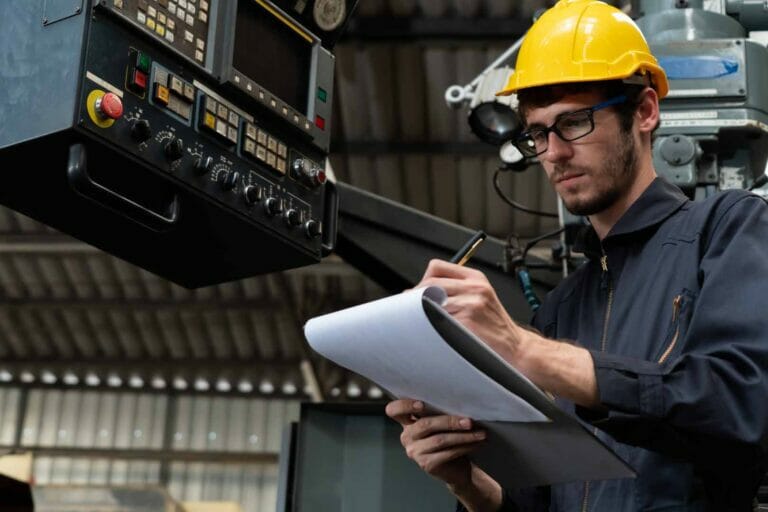
Industrial maintenance is an important part of keeping any industrial setting running smoothly and efficiently. It’s more than just repair work; it involves identifying potential problems and performing preventive measures to avoid them. Additionally, it involves carrying out regular inspections to ensure everything remains in good working order.
Maintenance technicians play a vital role in this process. They are responsible for ensuring that all the equipment is functioning properly and up-to-date with all safety regulations. There are several different types of industrial maintenance that can be performed. This includes mechanical repairs, electrical repairs, lubrication services, system upgrades, and so much more.
All these activities help keep machines operating correctly so that businesses can continue their operations without interruption or costly downtime. The importance of reliability-centered maintenance is vital for any organization. It encompasses a variety of tasks, which must be managed correctly for a successful manufacturing or production environment.
By keeping industrial maintenance as a priority, organizations can ensure that their employees are safe and their equipment runs efficiently. Plus, they will maintain compliance with all applicable regulatory standards.
Reactive maintenance is a type of industrial maintenance that focuses on addressing unplanned downtime and equipment failure. This involves responding quickly to any unexpected issues or breakdowns. It is important to do so in order to get the machines back online as soon as possible. Reactive maintenance can help reduce the cost of repair work, but it does not address potential problems before they occur.
Preventive maintenance, on the other hand, is a proactive approach to industrial maintenance that focuses on reducing costs and increasing efficiency. This involves identifying potential problems, performing regular inspections, and carrying out preventive measures to avoid equipment failure or unplanned downtime.
Overall, a balance between reactive and preventive maintenance is essential for any organization to maintain its operations safely and efficiently. Organizations can optimize their equipment by focusing on both short-term solutions and long-term planning. This approach helps ensure that the equipment functions correctly and saves money in the future.

Preventive maintenance is a broad term that encompasses several types of maintenance activities, each with its unique benefits and applications. When we talk about preventive maintenance, we’re referring to a systematic approach to upkeep. This approach involves regular inspection, detection, and correction of emerging failures before they escalate into serious problems.
One of the main types of preventive maintenance is predictive maintenance. This approach leverages technology and data analysis to anticipate failures and efficiently schedule maintenance activities.
For instance, using temperature, vibration, and noise measurements, we can often predict when a piece of equipment might fail. Then we can perform maintenance to prevent such occurrences. This advanced strategy has proven to be incredibly beneficial. It allows us to prevent unplanned downtime, reduce maintenance costs, and extend equipment lifespans.
In essence, a robust preventive maintenance program should incorporate a variety of tactics. From predictive maintenance strategies to basic tasks such as cleaning and lubrication, these activities are crucial to guaranteeing equipment reliability.
Designing a successful maintenance plan is akin to constructing a well-oiled machine. Each component has a specific role, and all parts must work in harmony to ensure smooth operation. A well-executed plan minimizes downtime, extends the life of equipment, and ultimately results in significant cost savings.
The first step in crafting a maintenance plan is to create a preventive maintenance checklist. This list should detail all tasks that need to be performed, including inspections, cleaning, lubrication, parts replacement, and predictive maintenance measures. The checklist should also specify the frequency of each task, ensuring nothing falls through the cracks.
Scheduling is another crucial element of a maintenance plan. Preventative maintenance scheduling involves organizing preventative maintenance tasks. It must do so in a manner that minimizes disruption to operations while ensuring that all necessary work gets done. It’s a delicate balancing act that requires careful planning and good communication.
Overall, a well-designed maintenance plan should outline what needs to be done. It should also dictate when and how it should be performed. This proactive approach to maintenance allows us to stay ahead of potential issues. It ensures maximum uptime and reliability for all our industrial equipment.
Preventive maintenance is not merely a good-to-have aspect of operations – it’s a strategic initiative that brings tangible business benefits. With proper preventive maintenance planning, organizations can reduce costs, minimize unplanned downtime, and enhance equipment reliability.
One significant advantage of preventive maintenance is the potential for reducing costs. This includes direct costs like labor and materials, as well as indirect costs such as lost productivity due to equipment downtime. Preventive maintenance can prevent costly repairs and extend the lifespan of equipment. It does this by identifying and addressing potential issues before they become major problems.
Unplanned downtime can be a significant cost factor for industrial operations. Downtime can be costly. It can cause financial losses and reduce productivity. It can be caused by unanticipated equipment failure or production breakdown.

An effective PM program is more than a set of tasks; it’s a comprehensive strategy that guides your maintenance activities. This strategy should be based on a thorough understanding of your equipment, its operational requirements, and potential failure modes. It should also consider your organizational goals, available resources, and potential risks.
Developing a PM program for your industrial setting requires thoughtful planning and a systematic approach. Start by documenting all your assets and their maintenance needs. Next, create a preventive maintenance schedule based on the recommended maintenance intervals and tasks for each piece of equipment. Develop procedures for routine inspections and condition monitoring, and train your maintenance technicians in these procedures.
Embracing preventive maintenance is about adopting a mindset of continuous improvement. Ensure your PM program remains effective by frequently reviewing and adjusting it based on insights, technological advancements, and operational changes.
Stay on top of things and be proactive in preserving your program’s relevance. Remember, a PM program is not a set-it-and-forget-it solution. It’s a dynamic system that evolves with your organization.
Maintenance plays a pivotal role in ensuring your industrial operations run efficiently in the present and future. A well-planned, comprehensive program of PM ensures that important operational aspects are handled properly, minimizing downtime, and optimizing workflow. So, make sure you understand the significance of maintenance and implement it for seamless industrial operations.